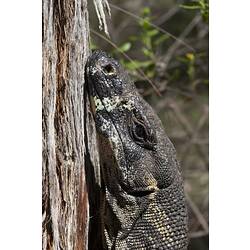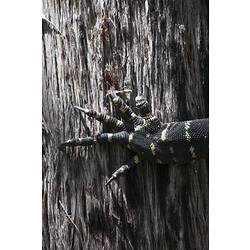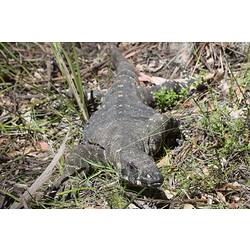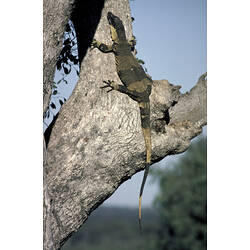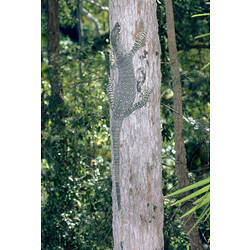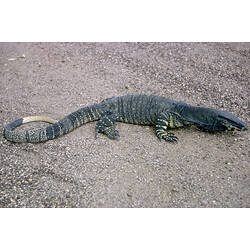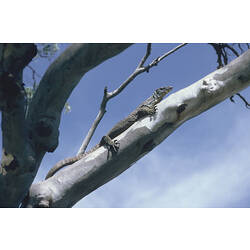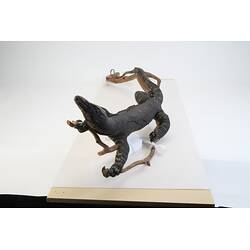General Description
Very large lizard with powerful legs and a long slender tail that is flattened from side to side (laterally flattened). Colour dark grey to black with scattered light spots and narrow yellow and black bands across body. Snout distinctly marked with black and yellow bands that extend under the chin. Bands on tail are narrow near the legs but become broad towards the tip of the tail. Total length from snout to tip of tail up to 2.1 m.
Biology
Tree Goannas, also known as Lace Monitors, are active lizards that forage over large areas. Their diet is varied, including insects, reptiles, small mammals, birds, eggs and carrion. They are a semi-arboreal species, mainly moving about in trees and sheltering in tree hollows. They do sometimes also forage on the ground, fleeing up trees when alarmed. Females lay up to 12 eggs, often in termite nests, where the constant temperature assists with incubation.
Distribution
Eastern mainland Australia.
Habitat
Dry sclerophyll forests and woodlands.
More Information
-
Animal Type
-
Animal SubType
-
Brief Id
A very large lizard - up to two metres long - with powerful legs and a long slender tail. Often found in trees.
-
Colours
Black, Yellow, Grey
-
Maximum Size
2.1 m
-
Habitats
-
Diet
Carnivore
-
Diet Categories
Insects, Invertebrates, Carrion, eggs, Mammals
-
Hazards
Not thought to be harmful but potential for injury from sharp claws and a nip from large pointed teeth could be painful.
-
Endemicity
-
Commercial
No
-
Conservation Statuses
CITES: Trade restrictions (Appendix II), FFG Threatened List: Endangered, EPBC Act 1999: Not listed, IUCN Red List: Least Concern
-
Taxon Name
-
Scientific Author
(White, 1790)
-
Common Name
Lace Monitor
-
Other Names
Tree Goanna
-
Kingdom
-
Phylum
-
Subphylum
-
Class
-
Subclass
-
Order
-
Suborder
-
Infraorder
-
Family
-
Genus
-
Species Name
varius


